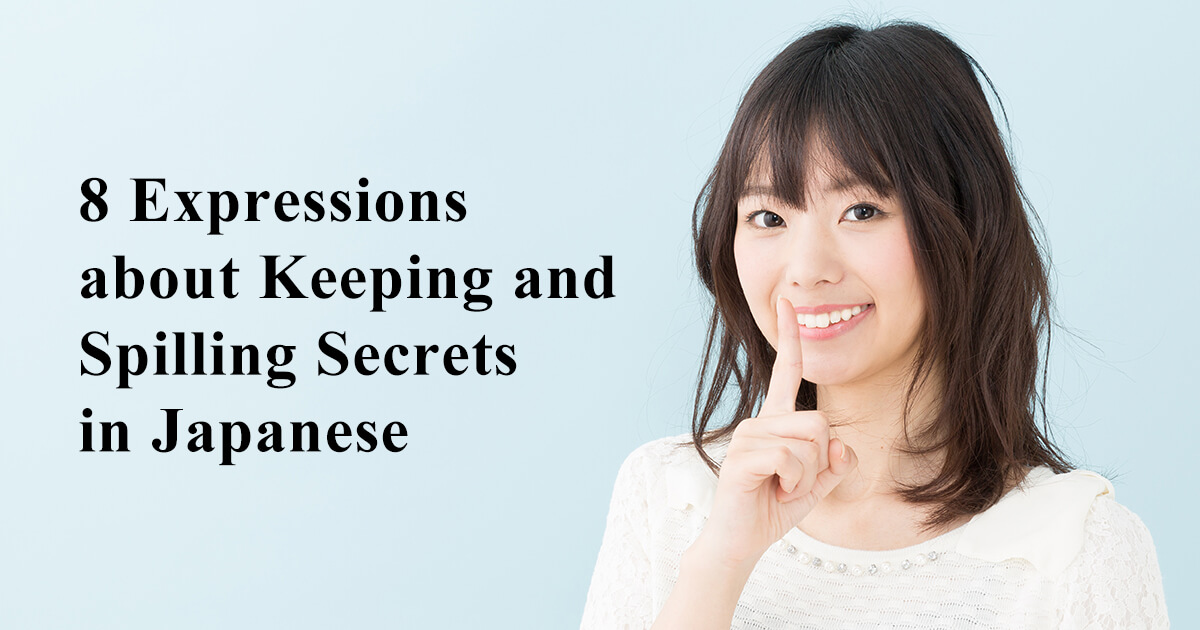
How do you phrase your thoughts when the subject is difficult to say? Today, we attempt to summarize the things we need to take note of when replying a difficult subject in Japanese.
The Direct Way Is Not Preferred in Japanese
I’m sure you would have seen the following or similar examples in any elementary Japanese textbooks.
A: 明日(あした)、一緒(いっしょ)に映画(えいが)を見(み)に行(い)きませんか。
Ashita, isshoni eiga o miniikimasenka. (Shall we go watch a movie together tomorrow?)
B:明日(あした)ですか。残念(ざんねん)ですが、明日(あす)はちょっと…。来週(らいしゅう)はどうですか。
Ashita desuka. Zannen desuga, asu wa chotto…Raishuu wa doo desuka. (Tomorrow? It’s a shame but tomorrow is a little…How about next week?)
“ちょっと chotto” is “少(すこ)し sukoshi”. The direct translation is “a little” but one would not understand what it means by “a little” in the above dialogue. It is actually an implicit way of expressing declination or rejection by not saying the key words of the declination or rejection itself, which would be something like “I can’t make it tomorrow/ I’m not free”. This implicit way of expression is actually preferred in Japanese.
Accept the other party’s opinion first, even if you are going to deny it later
Let’s analyze B’s sentence above. B starts by saying “ashita desuka” (tomorrow?) to accept and confirm A’s invitation. Accept what the other party has said first, instead of directly declining with “行(い)けません ikemasen” (I can’t go). This gives a signal that “I’m listening carefully to what you’ve said”.
Use cushion words
“残念(ざんねん)ですが zannen desuga” (it’s a shame, pity) is a so-called cushion word added before a subject. As the name suggests, it cushions what you are going to say later instead of going suddenly into the subject. Using plenty of such cushion words will facilitate communication in which we will not hurt the feelings of the other party.
There are actually many types of cushion words. Let’s look at it in detail at another time.
Hesitate when saying negative expressions
Next, let’s avoid negative expressions such as “いいえ iie” (no), “行(い)けません ikemasen” (I can’t go), “だめです dame desu” (no good), and “都合(つごう)が悪(わる)いです tsugoo ga warui desu” (it’s not convenient for me). Japanese verbs come at the end of the sentence. Instead of stating flatly with “~ません ~masen” (negative) expressions, let’s try to speak with hesitation. What B wanted to say was “明日(あした)はちょっと行(い)けません/都合(つごう)が悪(わる)いです ashita wa chotto ikemasen/tsugoo ga warui desu” (I can’t go tomorrow/It’s not convenient for me). By hesitating over the “ikemasen” at the end, the sentence ended up with only “chotto…”
Suggest other alternatives or state the reason
Lastly, B suggests an alternative because he feels bad about simply declining A’s offer. Of course, you may not be able to come up with an alternative if you are truly busy or if you do not like the other person enough to go out with him. In these cases, it would be good to convey the reasons implicitly. For example, you can say “今(いま)ちょっと仕事(しごと)が忙(いそが)しいので、また落(お)ち着(つ)いたら…ima chotto shigoto ga isogashii node, mata ochitsuitara…” (I’m a little busy at work now, so when I’m more settled down…)
Being mindful when approaching difficult subject matters is not only the habit of the Japanese people. I’m sure that you have your ways of saying difficult subject in your own language.
However, it depends on the culture whether one considers it thoughtful to go for the direct way or indirect way when approaching such subject matters. You can compare the differences in the way of thinking between your culture and the Japanese culture before choosing the appropriate style of speaking.
References:
The R Co., Ltd. “Kore Dakewa Shitteokitai “Keigo” no Kihon to Jyooshiki”, (Must-Know Keigo Basics and Common Sense), Forest Publishing, 2018
Hideo Satake & Remi Nishio “Nihongo o Shiru/Migaku Keigo no Kyookasho” (A Keigo Textbook on Knowing and Polishing Japanese), Beret Publishing, 2005






